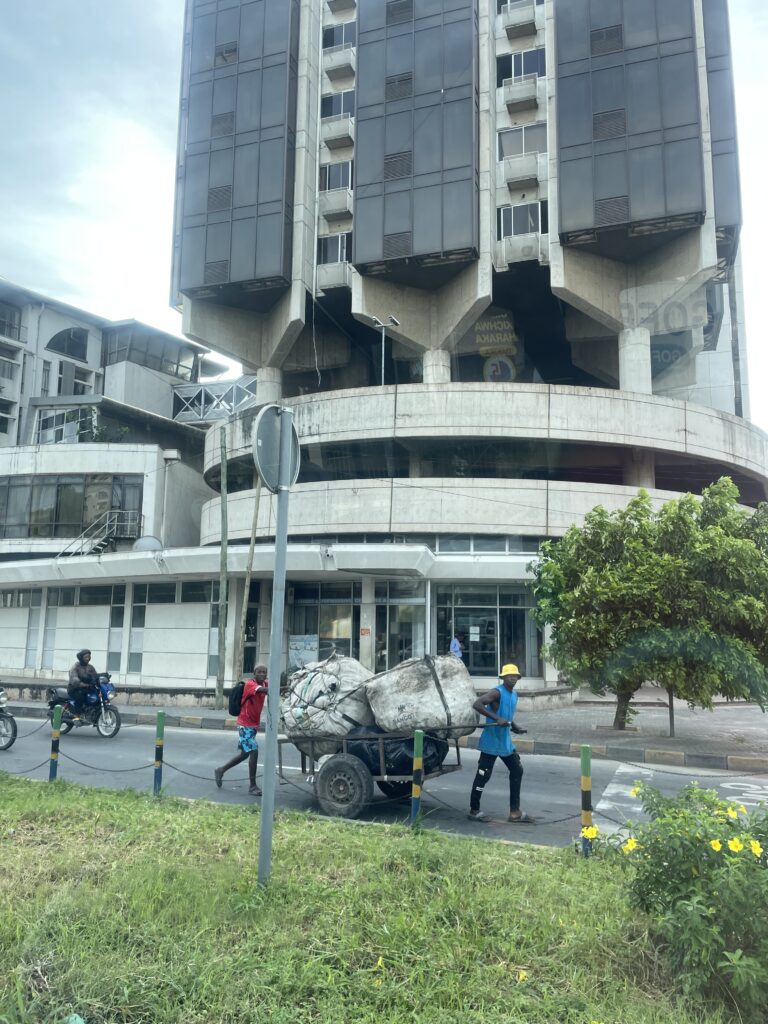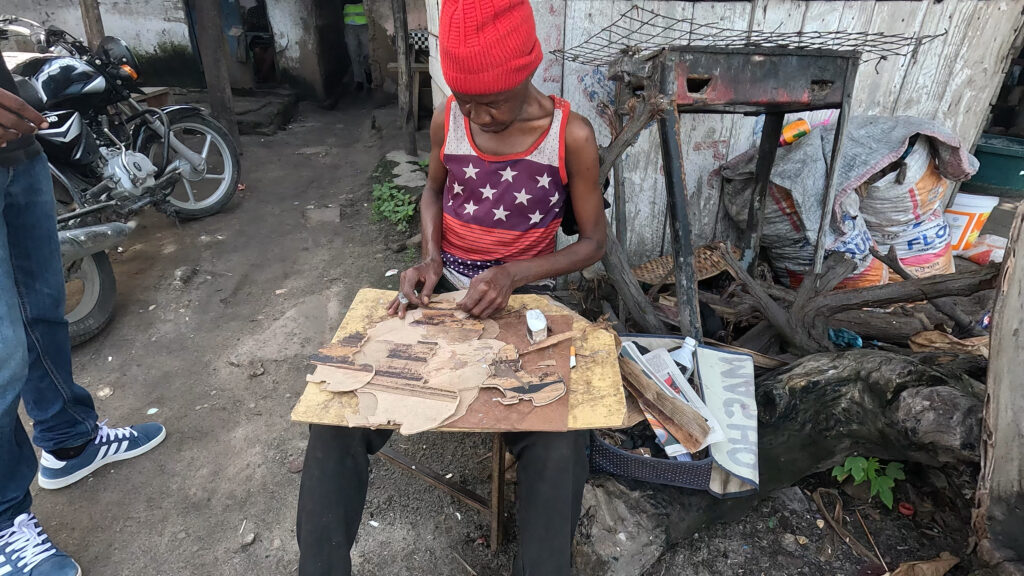After visiting nearby Zanzibar, we arrive in the big city of Dar es Salaam, the largest city and financial centre in Tanzania.

A group of Tanzanians dressed in traditional garments perform a song and dance for us before we hop on our bus for our tour.


You notice immediately the tall buildings of the city centre but seeing men hauling a wooden cart against the modernization of the city or women carrying baskets on their heads is striking.



We arrive at the Village Museum which showcases traditional huts from 16 different Tanzanian ethnic groups. It is interesting to learn how young boys are sent to live in their own hut to learn how to become men or how a senior wife selects her husband’s second wife or subsequent wives and is the one whose permission must be sought if the less senior wives wish to leave their hut. In the traditional culture of polygamy, wives call each other sister.




We are invited to join in a traditional dance. One of the dancers points to me and attaches a grass skirt to my waist and feather headdress on my head. Then we all dance along trying to keep up with the steps.

The ubiquitous souvenir shops is next. About five buses disgorges us all and immediately the merchants vie to get our attention to come in and visit. There are about twenty or so open air shops in a square area selling the exact same thing which explains why each is so determined to you come into their place.

Hubby is targeted and of course starts a conversation with one of the vendors who proceeds to invite him to see how some of the carvings and bracelets are made. Not wanting to lose track of him, I follow as we head through the back of the shop.
We exit to a big soccer size field where shanties backfill the shops in front. As we walk further and further away from our tour group (no one has seen us leave), my spider sense come alive and I whisper loudly to hubby that we should turn around.

Thankfully, we do stop, and the shopkeeper introduces us to one man on the ground with bare feet carving a mask. We also watch a woman carefully attach different colour banana leaves strands to a piece of wood that will eventually become a map of Africa.



Making our way back to our tour, we are brought yet again to another place to buy souvenirs. However, the Tinga Tinga Arts Community Society is more than that. The paintings and carvings are vibrant and gorgeous! We wish we had space to bring some home.



Our final stop is at the National Museum. The museum offers us a view of Tanzania’s geological, anthropological and cultural past.
Oddly, the first thing we see outside under a covered awning is old cars such as Rolls Royces belonging to British colonial government or Tanzanian officials.

Inside, are displays of prehistoric bones and skulls of men and animals. We love especially the sculptures and art on display. One especially, denotes the burden of a woman. It is powerful, depicting a women hunched over, a child strapped to her back, another one at her feet while she holds a pestle-like grinding stick into a jar presumably pounding a substance for a meal later on.





The traffic returning to the ship is horrible. Tuk-tuks and motorbikes are almost touching our, trying to edge their way past us. Some passengers that had gone inland for a safari, were given a police escort on their return so that they could make the ship’s departure time!

Waiting for us to move, I almost want to reach out to the multitude of jackfruit vendors on the street for a quick snack!

We finally get back to the ship and not too long after we say goodbye to Dar es Salaam and three passengers who arrived seconds after the ship pushed off and were handed their passports by the port agent. Hopefully, they will be able to meet up with us in Madagascar, our next destination.
Recent Comments